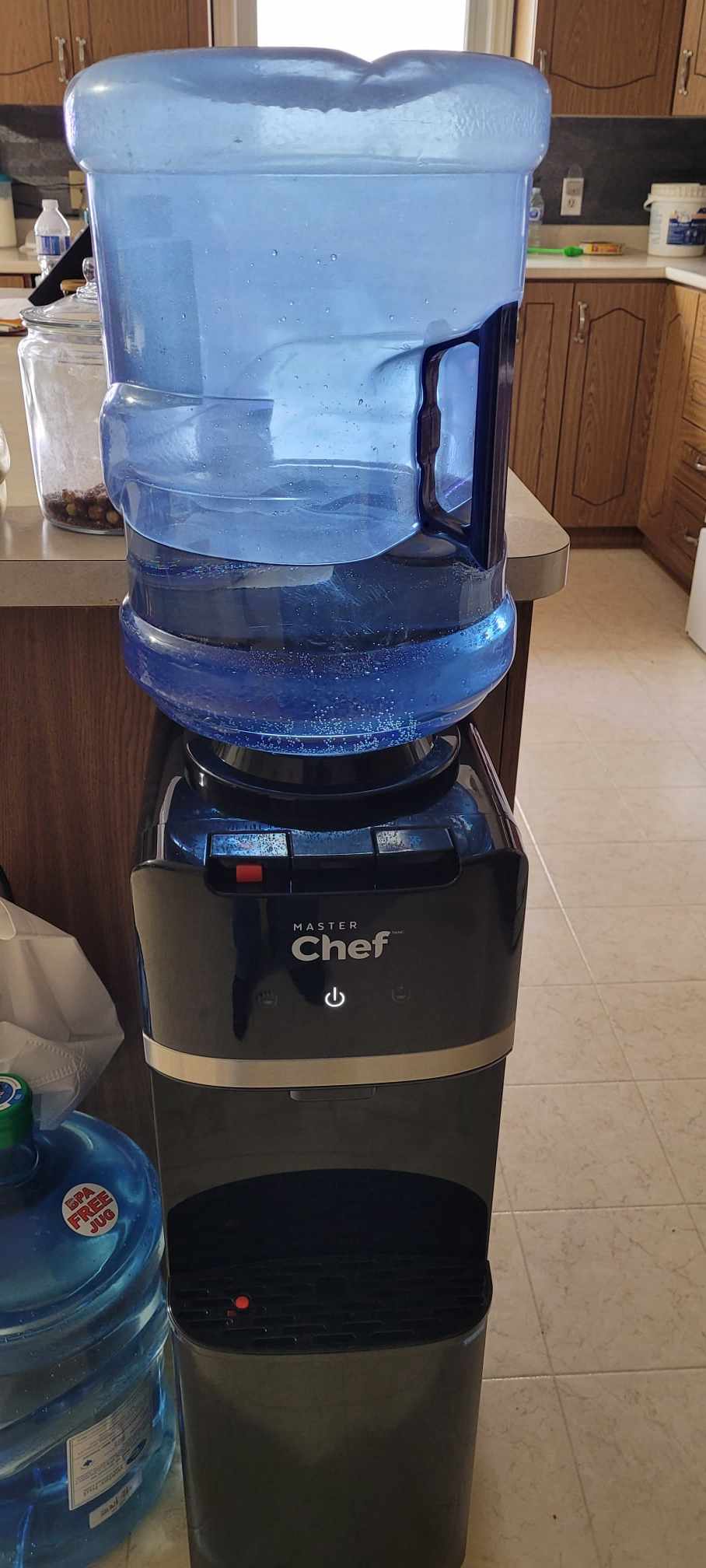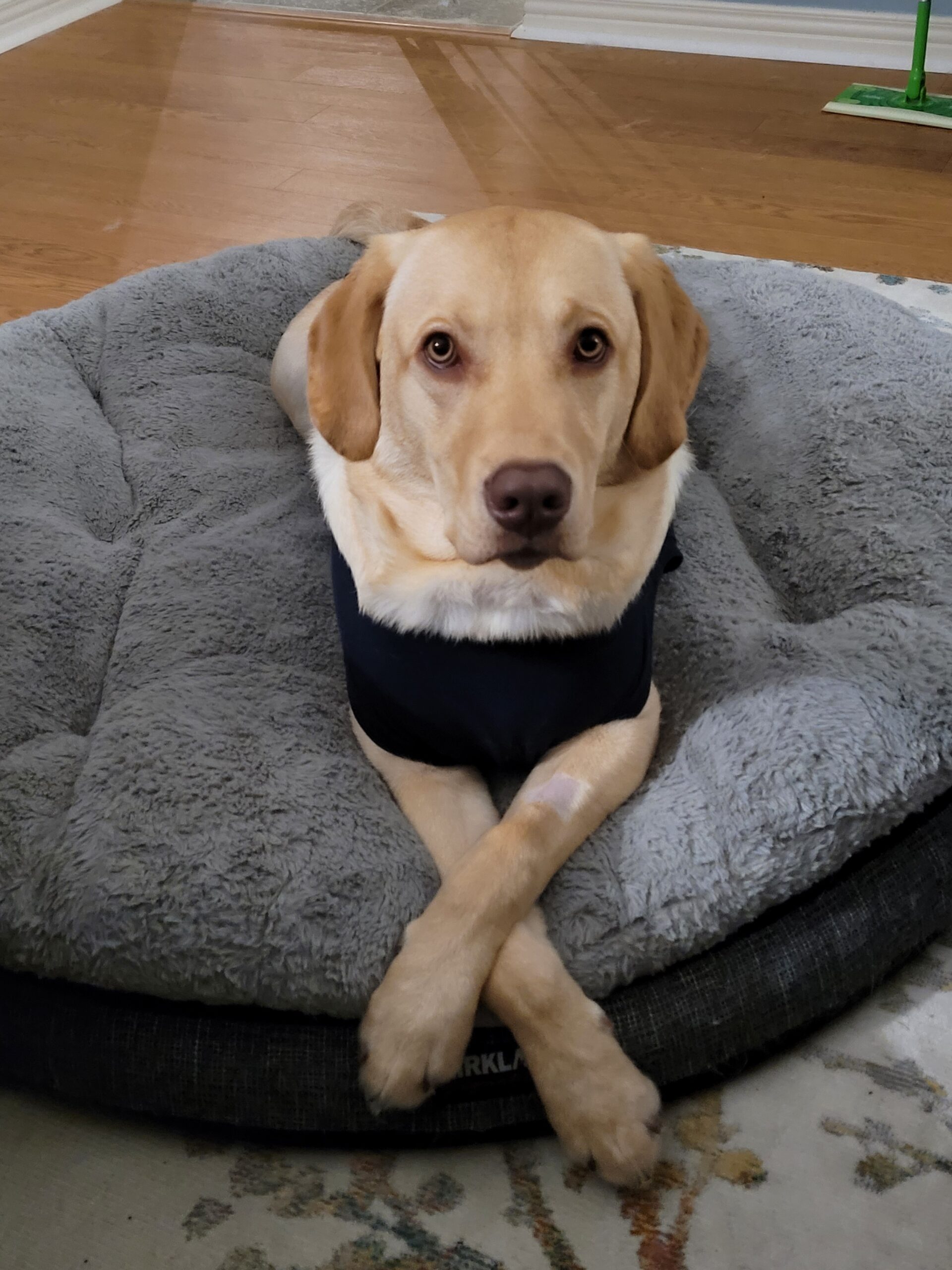
I have a problem – Labrador Retriever separation anxiety.
Dealing with separation anxiety is no fun task. Separation anxiety in dogs can be prevented which is muck easier than fixing it later. Think of it this way, the Labrador Retriever was bred to be around people and work with them all day long. Labs were bred to have a temperament to be social and friendly helpers of the fisherman on the boat and around the docks. They have been selectively bred to be around people so it is somewhat natural for them to suffer from separation anxiety when left alone when they have not been taught that everything is going to be ok. Yes, you may have to (and you should) teach your Labrador to accept the fact that they might be alone for a while and that they will be ok when left alone for long periods of time.
Separation anxiety in Labradors doesn’t always happen and there are good reasons why it doesn’t. So the first point I’d like to make is that once you get your puppy home you should do everything you can to teach them that they will be safe and happy alone and that you will eventually return. If you miss the signs of separation anxiety in your Labrador they could lead to behavioral problems or harm for him/her. They may feel abandoned when you leave the house and also may get bored easily. Here are some of the signs that your Labrador Retriever may have separation anxiety.
1. Drooling
2. Licking
3. Biting Paws or legs
4. Lots of barking or howling
5. Destructive behaviors such as tearing up your couch or biting a table leg
6. Frequent Urination
7. Shivering
8. Urinating or Defecating
9. Chewing
10. Digging
11. Pacing
12. Coprophagia
13. Escaping
So why has your Labrador gotten separation anxiety and do you need to know how to break a dog’s separation anxiety? It is frequently although not always more likely to show itself when a shelter dog comes home with you. This is largely due to their routine being disrupted and they are questioning their own safety. It is less likely to happen with a puppy who is brought home and who grows up with your routine at your home but it is still possible. Other causes could be loss of a person in the home pack or another dog, loss of a group of people as in your dog being with you at work all day and then suddenly you move and work from a home office, change in family members, a change in schedule such as a new job or even shift work, and can even happen if you move to a new home and your dog’s surroundings have completely changed.
To begin to address the separation anxiety you need to first rule out other possible causes for the symptoms you are seeing. For example house-soiling could be incontinence caused by a weak sphincter (age), a urinary tract infection, spay surgery hormone related issues, kidney disease, diabetes, bladder stones, Cushing’s disease and neurological problems. It could also be incomplete house training, urine marking, submissive urination, juvenile destruction or even boredom. So as you can see this is not a simple thing to diagnose properly as there are many other things to consider and rule out.
Treatment for Mild Separation Anxiety
If you and your Veterinarian decide that your Labrador does not have a medical issue causing the symptoms of separation anxiety it is possible to counter condition your Labrador so that it no longer associates the feared behavior with being a bad thing. Counter conditioning is a method of leaving your dog for short periods of time, that will slowly show your Lab that the feared behavior can be associated with being a good thing. An example may be being alone is associated with delicious food, a high reward food that they only get when you leave.
Food puzzle toys take 20 to 30 minutes to solve will provide mental stimulation and if you give one of these toys when you leave your dog it will associate you leaving with pleasure. Another idea is to give them a frozen Kong toy filled with peanut butter (check it does not have xylitol as it is poisonous). A frozen toy will last longer than a thawed one and will stimulate them until the treat inside is gone. Once you return home remove these toys so your Lab doesn’t see them as every day toys and they remain special for those times when you leave.
Treatment for Moderate Separation Anxiety
Treatment for moderate separation anxiety involves desensitization and counter conditioning. This level of anxiety in your Labrador requires the aid of a certified animal behaviorist or another verified trained professional in order to ensure that you aren’t making mistakes and compounding the anxiety problems with your Lab. The treatment involves short separations where you leave your dog for short periods which don’t cause anxiety and then building slowly on them and lengthening them gradually to longer periods. Have you ever seen the movie “What about Bob” where Bill Murray plays Bob who takes “baby steps” in order to beat his fears? This therapy works along the same principles of slow, short, manageable exposure and is used for any dog breeds.
During this treatment phase it is very important that you are sure your Lab avoids the fear you are working on or you might end up making it worse. First it’s a good idea to identify and eliminate any pre-leaving cues that your Labrador associates with being left alone. These could be things like putting on makeup, putting on your coat, hearing the car keys jingle, or could even be you talking to your dog to reassure him/her that they will be all right when you are gone. Your Lab has learned that these pre-leaving cues are a signal that they will be alone for a while, and while they see that as an unpleasant thing you need to disassociate them with you leaving. For example, put your makeup on well before leaving, jingle the car keys when you are sitting on the couch and don’t leave, and stop prepping them by talking to them before you leave. The cause of the anxiety could be brought on because it is you who is anxious and is transferring that to your dog (“mama’s leaving, you’ll be ok…I’ll be home later you be a good boy”). This will take time as in maybe weeks or months to recondition them so be patient. It is the numerous repetitions of you doing something and them feeling safe that will counter condition them.
Once you have eliminated the pre-leaving cues and your Retriever has no anxiety before you leave it’s time to begin leaving them for a short bit. By a short bit I mean 1-2 seconds where you are out of sight. To do this you will issue a stay command and then slip behind a door for 1-2 seconds and then return. Once you return release them from the stay command and carry on. Gradually, very slowly you are going to increase the time you are out of sight to about 10 seconds. Depending on your dog this may take a few days to a few weeks. Once you are able to reach 10 seconds without issue give your Lab a food-stuffed toy before you leave which suggests to them they are safe and happy. You can eliminate the stay command at 10 seconds as well. Be sure that once you return, and this can be just before he/she finished the food toy, that if there is any excitement with your dog you allow them to calm down before attempting another short leave. While you are in this stage watch for signs of stress (panting, yawning, drooling, trembling, pacing) and if you see any, shorten the time away so they again feel safe and build up slower from there.
Most anxious responses will occur in the first 40 minutes so taking the time to build up to this point will take more care and patience. it could take as long as 4 or 5 months depending on how your dog responds and how effective you are at setting up the safe environment. Once you reach 40 minutes alone then it is normally safe to increase the away time in 5 minute increments. Once you reach 90 minutes alone then your Lab can likely handle 3 or 4 hours as well. At this point you can attempt to increase the away time by an hour at a time until you reach 4-8 hours away time. Again, be sure to look for signs of anxiety. If you see any you are progressing too quickly and need to back pedal a bit.
It is important that your Labrador never experience another full blown episode or they will regress back to their untreated self. The premise is for them to experience a low intensity version of whatever frightens them so in the beginning while you are conducting the therapy you will not be able to leave them alone when you are gone. Utilize a friend, bring them to work, use a doggy daycare or a sitter to watch and stimulate them.
In order to prevent this from happening try to give your Labrador Retriever jobs to do. They are working dogs and love to work for you. This is who they are. Some ideas are feeding them in small piles around the house and having them hunt for their food, using food puzzles, making and other creative things you may think of. Exercise right before you leave can also be a big help. If you tire your Labrador out right before leaving then they will likely nap for a couple of hours. Combine this with a frozen Kong somewhere in the house that they may find and you have successfully kept them busy for maybe 3 or 4 hours.
Should I Give my dog Separation Anxiety Medication?
It may be necessary to utilize a medication in the beginning to assist your Retriever achieving a calm state while you are conducting counter conditioning therapy. Of course always consult your Veterinarian to discover which type of medication is the way to go. There are many organic potions out there that claim to be fixes and “natural.” Natural isn’t necessarily better. Arsenic, snake venom, mercury and many more substances are also natural. Take the safe road and get your Vet’s advice first.
There are many people who have experienced success moderating anxiety using CBD. If you explore this route just be sure your CBD is of high quality and it is carried in hemp oil for efficient absorbtion into your dog. Get more information here for CBD to control anxiety.



